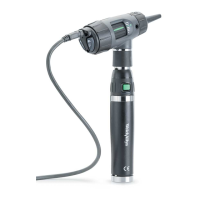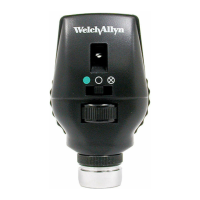Appendix A
A-35
Middle Ear Tumor
A wide variety of neoplastic processes exist that invade the middle ear. The
most common is the keratoma (cholesteatoma), a collection of keratinizing
squamous epithelium that frequently originates from Shrapnel’s membrane
(pars flaccida) of the tympanic membrane or the ear canal wall and invades
the middle ear space. Other middle ear tumors include the cholesterol
granuloma, glomus tumor, and squamous cell carcinoma (Goodhill, 1979).
These pathologies generally result in a flat tympanogram.
Lateral Ossicular Fixation
Lateral ossicular fixation may result from tympanosclerosis, a complication
of chronic otitis media that may involve the eardrum, malleus, incus, and/or
stapes. In general, the more lateral the fixation, the more effect the condition
has on the tympanogram. Lateral fixations typically cause low static admit-
tance and wide tympanometric widths.
Otosclerosis
Because the otosclerotic lesion is more medial than lateral ossicular
fixation, the tympanogram is less affected. The tympanometric shape is
often indistinguishable from normal, although the static admittance may
be slightly low and the tympanometric gradient (width) may be narrower
than the normal tympanogram.

